Research Area D - Publications 2012
28-Dec-2012
Nucleic Acids Research, online article
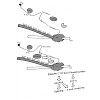
Co-transcriptional pre-mRNA processing relies on reversible phosphorylation of the carboxyl-terminal domain (CTD) of Rpb1, the largest subunit of RNA polymerase II (RNAP II). In this study, we replaced in live cells the endogenous Rpb1 by S2A Rpb1, where the second serines (Ser2) in the CTD heptapeptide repeats were switched to alanines, to prevent ...
27-Dec-2012
PLOS ONE, online article
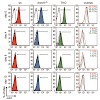
DNA methylation patterns change dynamically during mammalian development and lineage specification, yet scarce information is available about how DNA methylation affects gene expression profiles upon differentiation. Here we determine genome-wide transcription profiles during undirected differentiation of severely hypomethylated (Dnmt1−/−) embryonic stem cells ...
27-Dec-2012
Advanced Functional Materials, online article
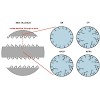
Oligonucleotides used in gene therapy and silencing are fragile compounds that degrade easily in biological environments. Porous biocompatible carrier particles may provide a useful strategy to deliver these therapeutics to their target sites. Development of appropriate delivery vehicles, however, requires a better understanding of the oligonucleotide-host ...
15-Dec-2012
Structural Biology, online article
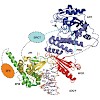
ADP-ribosylation is a post-translational modification of proteins that occurs mostly in response to cellular stress and is catalysed by members of the diverse poly-ADP-ribose (PAR) polymerase (PARP/ARTD) family. The founding member of the family, PARP1, is best recognized for its function as a sensor of DNA strand lesions, but ADP-ribosylation has been implicated ...
13-Dec-2012
Science, online article

Translation elongation factor P (EF-P) is critical for virulence in bacteria. EF-P is present in all bacteria and orthologous to archaeal and eukaryotic initiation factor 5A, yet the biological function has so far remained enigmatic. Here, we demonstrate that EF-P is an elongation factor that enhances translation of polyproline-containing proteins: In the absence ...
07-Dec-2012
Journal of Bacteriology, online article
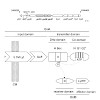
Escherichia coli contains 30 two-component systems (TCSs), each consisting of a histidine kinase and a response regulator. Whereas most TCSs are well characterized in this model organism, little is known about the YpdA/YpdB system. To identify YpdB-regulated genes, we compared the transcriptomes of E. coli cells overproducing either YpdB or a control protein. ...
02-Dec-2012
Nature Structural & Molecular Biology, online article
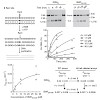
ISWI slides nucleosomes along DNA, enabling the structural changes of chromatin required for the regulated use of eukaryotic genomes. Prominent mechanistic models imply cooperation of the ISWI ATPase domain with a C-terminal DNA-binding function residing in the HAND-SANT-SLIDE (HSS) domain. Contrary to these models, we show by quantitative biochemical means that ...
28-Nov-2012
PLOS ONE, online article
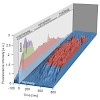
In basic and applied HIV research, reliable detection of viral components is crucial to monitor progression of infection. While it is routine to detect structural viral proteins in vitro for diagnostic purposes, it previously remained impossible to directly and dynamically visualize HIV in living cells without genetic modification of the virus. Here, we describe ...
28-Nov-2012
Plos one, online article
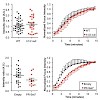
Recruitment of 53BP1 to chromatin flanking double strand breaks (DSBs) requires γH2AX/MDC1/RNF8-dependent ubiquitination of chromatin and interaction of 53BP1 with histone H4 methylated on lysine 20 (H4K20me). Several histone methyltransferases have been implicated in 53BP1 recruitment, but their quantitative contributions to the 53BP1 response are unclear. We ...
26-Oct-2012
Plos, online article
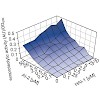
Quorum sensing regulates cell density-dependent phenotypes and involves the synthesis, excretion and detection of so-called autoinducers. Vibrio harveyi strain ATCC BAA-1116 (recently reclassified as Vibrio campbellii), one of the best-characterized model organisms for the study of quorum sensing, produces and responds to three autoinducers. HAI-1, AI-2 and CAI-1 ...
18-Oct-2012
Molecular Cell, online article
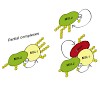
The process of dosage compensation (DC) in Drosophila counterbalances the monosomy of the X chromosome in male flies by increasing the transcription from this unique chromosome in the two-fold range. Upon exclusive expression of male-specific lethal 2 (MSL2) in males, the dosage compensation machinery assembles on active X-chromosomal genes. Overexpression of MSL ...
11-Oct-2012
Digestive Diseases, online article
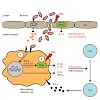
Background: Inflammatory bowel disease (IBD) is characterized by chronic intestinal inflammation due to dysregulation of the mucosal immune system. The cytokines IL-1β and IL-18 appear early in intestinal inflammation and their pro-forms are processed via the caspase-1-activating multiprotein complex, the Nlrp3 inflammasome. Previously, we reported that the ...
21-Sep-2012
Nucl. Acids Res., online article
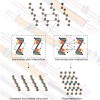
In eukaryotes, DNA is organized together with histones and non-histone proteins into a highly complex nucleoprotein structure called chromatin, with the nucleosome as its monomeric subunit. Various interconnected mechanisms regulate DNA accessibility, including replacement of canonical histones with specialized histone variants. Histone variant incorporation can ...
18-Sep-2012
PLOS ONE, online article
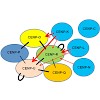
Kinetochores are multi-protein megadalton assemblies that are required for attachment of microtubules to centromeres and, in turn, the segregation of chromosomes in mitosis. Kinetochore assembly is a cell cycle regulated multi-step process. The initial step occurs during interphase and involves loading of the 15-subunit constitutive centromere associated complex ...
17-Sep-2012
Journal of Molecular Biology, online article
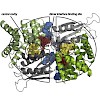
At acidic pH and in the presence of lysine, the pH sensor CadC activates transcription of the cadBA operon encoding the lysine/cadaverine antiporter CadB and the lysine decarboxylase CadA. In effect, these proteins contribute to acid stress adaptation in Escherichia coli. cadBA expression is feedback inhibited by cadaverine, and a cadaverine binding site is ...
11-Sep-2012
Molecular Systems Biology, online article
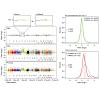
Extra chromosome copies markedly alter the physiology of eukaryotic cells, but the underlying reasons are not well understood. We created human trisomic and tetrasomic cell lines and determined the quantitative changes in their transcriptome and proteome in comparison with their diploid counterparts. We found that whereas transcription levels reflect the ...
09-Sep-2012
RNA Biology, online article
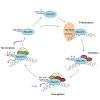
Eukaryotic RNA polymerase II (RNAP II) has evolved an array of heptad repeats with the consensus sequence Tyr1-Ser2-Pro3-Thr4-Ser5-Pro6-Ser7 at the carboxy-terminal domain (CTD) of its largest subunit (Rpb1). Dynamic phosphorylation of Ser2, Ser5 and Ser7 residues orchestrates the binding of transcription and RNA processing factors to the transcription machinery. ...
06-Sep-2012
Biochimica et Biophysica Acta, online article
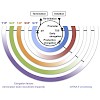
The eukaryotic RNA polymerase II (RNAPII) catalyzes the transcription of all protein encoding genes and is also responsible for the generation of small regulatory RNAs. RNAPII has evolved a unique domain composed of heptapeptide repeats with the consensus sequence Tyr1–Ser2–Pro3–Thr4–Ser5–Pro6–Ser7 at the C-terminus (CTD) of its largest subunit (Rpb1). Dynamic ...
13-Jul-2012
The Journal of Biological Chemistry, online article

Ribosomal RNA gene transcription, co-transcriptional processing, and ribosome biogenesis are highly coordinated processes that are tightly regulated during cell growth. In this study we discovered that Mybbp1a is associated with both the RNA polymerase I complex and the ribosome biogenesis machinery. Using a reporter assay that uncouples transcription and RNA ...
06-Jul-2012
Molecular and Cellular Biology, online article
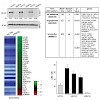
ISWI is an evolutionarily conserved ATPase that catalyzes nucleosome remodeling in different macromolecular complexes. Two mammalian ISWI orthologs, SNF2H and SNF2L, are thought to have specialized functions despite their high sequence similarity. To date, the function of SNF2L in human cells has not been a focus of research. Newly established specific monoclonal ...
29-Jun-2012
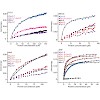
In different phases of the transcription cycle, RNA polymerase (Pol) II recruits various factors via its C-terminal domain (CTD), which consists of conserved heptapeptide repeats with the sequence Tyr1-Ser2-Pro3-Thr4-Ser5-Pro6-Ser7. We show that the CTD of transcribing yeast Pol II is phosphorylated at Tyr1, in addition to Ser2, Thr4, Ser5, and Ser7. Tyr1 ...
21-Jun-2012
Epigenetics & Chromatin, online article
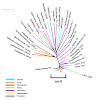
Histone variants are non-allelic protein isoforms that play key roles in diversifying chromatin structure. The known number of such variants has greatly increased in recent years, but the lack of naming conventions for them has led to a variety of naming styles, multiple synonyms and misleading homographs that obscure variant relationships and complicate database ...
08-Jun-2012
Journal of Bacteriology, online article
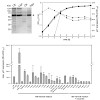
Two-component systems (TCSs) consisting of a membrane-anchored histidine kinase (HK) and a response regulator (RR) are major players in signal transduction in prokaryotes. Whereas most TCSs in Escherichia coli are well characterized, almost nothing is known about the LytS-like HK YehU and the corresponding LytTR-like RR YehT. To identify YehT-regulated genes, we ...
01-Jun-2012
Cell Cycle, online article

Cyclin-dependent kinase-9 (CDK9) plays a central role in transcriptional elongation and controls multiple cotranscriptional histone modifications, including histone H2B monoubiquitination (H2Bub1). Like other CDK9-dependent histone modifications, the role of CDK9 in maintaining H2Bub1 was shown to be partially dependent upon the phosphorylation status of Ser2 of ...
11-May-2012
PLoS ONE, online article
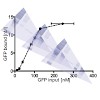
Fluorescent fusion proteins are widely used to study protein localization and interaction dynamics in living cells. However, to fully characterize proteins and to understand their function it is crucial to determine biochemical characteristics such as enzymatic activity and binding specificity. Here we demonstrate an easy, reliable and versatile ...
09-May-2012
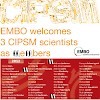
The 3 life scientists Ulrike Gaul, Andreas Ladurner and Michael Sattler from CIPSM were today recognised by EMBO for their excellence in research. EMBO elects new members annually on the basis of scientific excellence. The selected researchers will help shape the direction of the life sciences in Europe and beyond by their involvement with the activities of the ...
02-May-2012
Advanced Healthcare Materials, online article
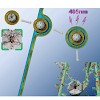
Different bioactive molecules are released into living cells from lipid-covered mesoporous silica nanoparticles. The release is triggered by light, as the particles feature covalently attached photosensitizers as membrane-opening agents. It is demonstrated that the particles achieve endosomal escape and that they release their cargo into the cytosol.
01-May-2012
The EMBO Journal, online article
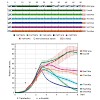
Eukaryotic RNA polymerase II (Pol II) has evolved an array of heptad repeats with the consensus sequence Tyr1-Ser2-Pro3-Thr4-Ser5-Pro6-Ser7 at the carboxy-terminal domain (CTD) of the large subunit (Rpb1). Differential phosphorylation of Ser2, Ser5, and Ser7 in the 5′ and 3′ regions of genes coordinates the binding of transcription and RNA processing factors to ...
26-Apr-2012
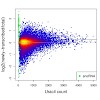
RNA synthesis and decay rates determine the steady-state levels of cellular RNAs. Metabolic tagging of newly transcribed RNA by 4-thiouridine (4sU) can reveal the relative contributions of RNA synthesis and decay rates. The kinetics of RNA processing, however, so far remained unresolved. Here, we show that ultra-short 4sU-tagging not only provides snap-shot ...
29-Mar-2012
Nucleic Acids Research, online article
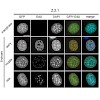
The histone variant H2A.Z has been implicated in many biological processes, such as gene regulation and genome stability. Here, we present the identification of H2A.Z.2.2 (Z.2.2), a novel alternatively spliced variant of histone H2A.Z and provide a comprehensive characterization of its expression and chromatin incorporation properties. Z.2.2 mRNA is found in all ...
02-Mar-2012
Nucl. Acids Res., online article
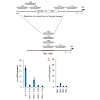
Specific control of gene activity is a valuable tool to study and engineer cellular functions. Recent studies uncovered the potential of transcription activator-like effector (TALE) proteins that can be tailored to activate user-defined target genes. It remains however unclear whether and how epigenetic modifications interfere with TALE-mediated transcriptional ...
01-Mar-2012
Genes & Development, online article
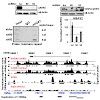
The histone variant macroH2A generally associates with transcriptionally inert chromatin; however, the factors that regulate its chromatin incorporation remain elusive. Here, we identify the SWI/SNF helicase ATRX (alpha-thalassemia/ MR, X-linked) as a novel macroH2A-interacting protein. Unlike its role in assisting H3.3 chromatin deposition, ATRX acts as a ...
15-Feb-2012
Cell Biology, online article

The nucleus contains a plethora of different dynamic structures involved in the regulation and catalysis of nucleic acid metabolism and function. Over the past decades countless factors, molecular structures, interactions and posttranslational modifications have been described in this context. On the one side of the size scale X-ray crystallography delivers ...
09-Feb-2012
Nature Neuroscience, online article
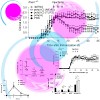
The action of cytosolic RIG-I–like helicases (RLHs) in the CNS during autoimmunity is largely unknown. Using a mouse model of multiple sclerosis, we found that mice lacking the RLH adaptor IPS-1 developed exacerbated disease that was accompanied by markedly higher inflammation, increased axonal damage and elevated demyelination with increased encephalitogenic ...
03-Feb-2012
Cell Stem Cell, online article

Polycomb repressor complexes (PRCs) are important chromatin modifiers fundamentally implicated in pluripotency and cancer. Polycomb silencing in embryonic stem cells (ESCs) can be accompanied by active chromatin and primed RNA polymerase II (RNAPII), but the relationship between PRCs and RNAPII remains unclear genome-wide. We mapped PRC repression markers and ...
01-Feb-2012
The EMBO Journal, online article
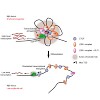
The key haematopoietic regulator Myb is essential for coordinating proliferation and differentiation. ChIPSequencing and Chromosome Conformation Capture (3C)-Sequencing were used to characterize the structural and protein-binding dynamics of the Myb locus during erythroid differentiation. In proliferating cells expressing Myb, enhancers within the Myb-Hbs1l ...
31-Jan-2012
Nucleus, online article

Centromeres are important structural constituents of chromosomes that ensure proper chromosome segregation during mitosis by providing defined sites for kinetochore attachment. In higher eukaryotes, centromeres have no specific DNA sequence and thus, they are rather determined through epigenetic mechanisms. A fundamental process in centromere establishment is the ...
20-Jan-2012
Cell, online article

Chromatin-modifying enzymes have long been proposed to be the authors of an epigenetic language, but the origin and meaning of the messages they write in chromatin are still mysterious. Recent studies suggesting that the effects of diet can be passed on epigenetically to offspring add weight to the idea that histones act as metabolic sensors, converting changes ...
08-Jan-2012
Biochimie, online article
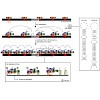
A large part of higher eukaryotic genomes is transcribed into RNAs lacking any significant open reading frame. This “non-coding part” has been shown to actively contribute to regulating gene expression, but the mechanisms are largely unknown. Particularly instructive examples are provided by the dosage compensation systems, which assure that the single X ...
01-Jan-2012
The Journal of Immunology, online article
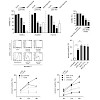
A key host response to limit microbial spread is the induction of cell death when foreign nucleic acids are sensed within infected cells. In mouse macrophages, transfected DNA or infection with modified vaccinia virus Ankara (MVA) can trigger cell death via the absent in melanoma 2 (AIM2) inflammasome. In this article, we show that nonmyeloid human cell types ...










